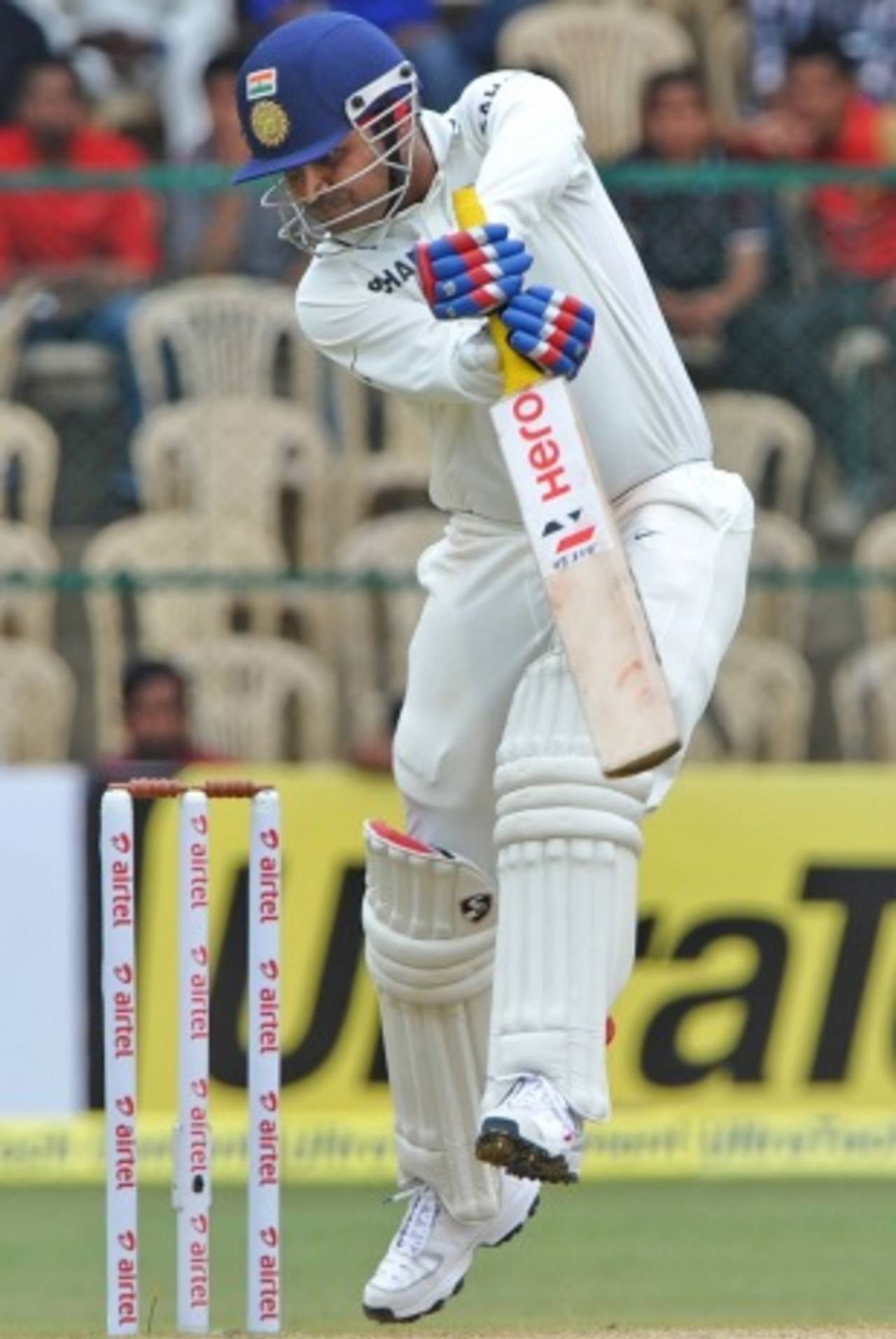One of the central planks of India's ascent to the No. 1 spot three years ago was the stability provided at the top of the order by the free-scoring
Virender Sehwag and
Gautam Gambhir. For a country that had perpetually been on the lookout for a quality Test opening partnership since the retirement of Sunil Gavaskar in 1987, the reliable Sehwag-Gambhir combination ensured India's vastly experienced middle-order was finally shielded from the new ball.
Since Gambhir's recall to the Test side in July 2008, the pair established themselves as one of the most feared opening partnerships in world cricket. By the end of 2010 they had become India's most prolific first-wicket pair, but since the capitulation in
Centurion in December 2010, they haven't put on a century stand and the drought of individual hundreds stretches even further back.
The Australia tour was the nadir, with a highest opening stand of 26 runs spanning eight innings, and Indian fans were reminded of the bad old days of 10-15 years ago when the No. 3 Rahul Dravid was virtually an opener, given how quickly India's top two were easily separated.
That feeling that a wicket was imminent with India's openers at the crease returned again when New Zealand's quicks had the new ball swerving around at the Chinnaswamy Stadium. Gambhir was beaten for pace by the deceptively quick Trent Boult in the first over; New Zealand were convinced they had Sehwag dismissed twice in the second over, lbw off the first ball and caught-behind off the last but Sehwag survived both close calls; Gambhir nicked a away-going delivery to third slip in the third only for Brendon McCullum to put down an absolute sitter, before the shaky opening stand ended in the fourth with Gambhir shouldering arms to a delivery from Tim Southee that took the off bail.
Failing in seamer-friendly conditions of Australia is one thing, but fumbling at home against one of the weakest Test teams around raises alarms. Particularly since three of the India's middle-order legends have retired, to be replaced by three youngsters.
India batsmen over the past decade have found it notoriously difficult to convert a successful limited-overs career into a long Test one. Since VVS Laxman established himself in the Test team in the late 90s, only two Indian batsmen have consistently retained their spots in the Test line-up over several years: Sehwag and Gambhir.
In the new-look Indian line-up, the two are now senior statesman, and expected to deliver the performances that will ease Cheteshwar Pujara, Virat Kohli and Suresh Raina's journey in Test cricket. All three have tightened their hold on their middle-order spots with runs in this series, but with sterner tests lying in wait they would like a better platform than they have been given this series.
While Sehwag and Gambhir's form has fallen away, neither is in any danger yet of losing his spot. Sehwag remains a man who can change a game in an hour, especially in subcontinental conditions, and Gambhir's tenacity in difficult situations, highlighted during the 2010-11 tour of South Africa when he helped save the decisive
Cape Town Test, makes him a valuable member of the side.
The question for India is how long they should continue with the same opening combination. When either of them has been missing through injury or suspension, India have tried out a couple of replacements in M Vijay and Abhinav Mukund, neither of whom has done enough to deserve a permanent place. While Abhinav is still a regular in the A squad, Vijay has slipped off the selectors' radar, ignored for the A tour of the West Indies in June and the forthcoming trip to New Zealand. Ajinkya Rahane, Mumbai's domestic run machine, is now the frontrunner for the position of back-up opener, but is unlikely to force himself into the team when both seniors are fit.
One option that had opened up after the retirement of Dravid and Laxman this year was to push Sehwag down to the middle-order, a position that he has long said he wants to bat in. That could have opened the door for Rahane, and also allowed India to groom an opening pair for future overseas tours. Sehwag had a miserable time at the top of the order on the tours of South Africa, England and Australia over the past two years, and his devil-may-care batting approach is perhaps not best suited for those testing conditions. That option isn't available at least in the near future as the middle-order batsmen have all performed in the limited chances provided in the current series.
That means India will persist with Sehwag and Gambhir at the top of the order at least for the England home series starting late October. James Anderson and Co. will consistently ask more searching questions of India's batting than New Zealand's young attack, and an escape from a top-order collapse will be much harder than it was on the second day at the Chinnaswamy Stadium, making a sturdy opening pair all the more important.
